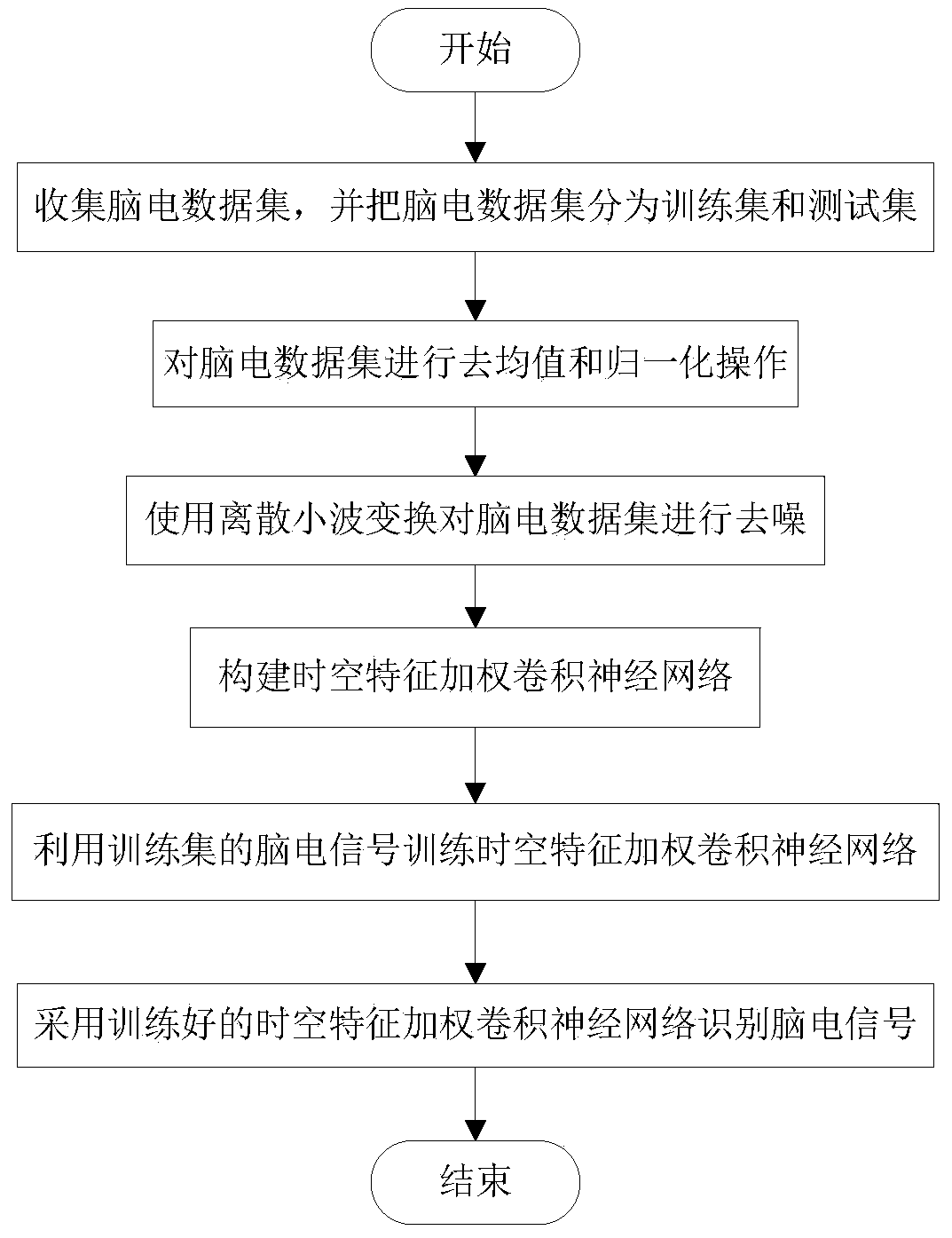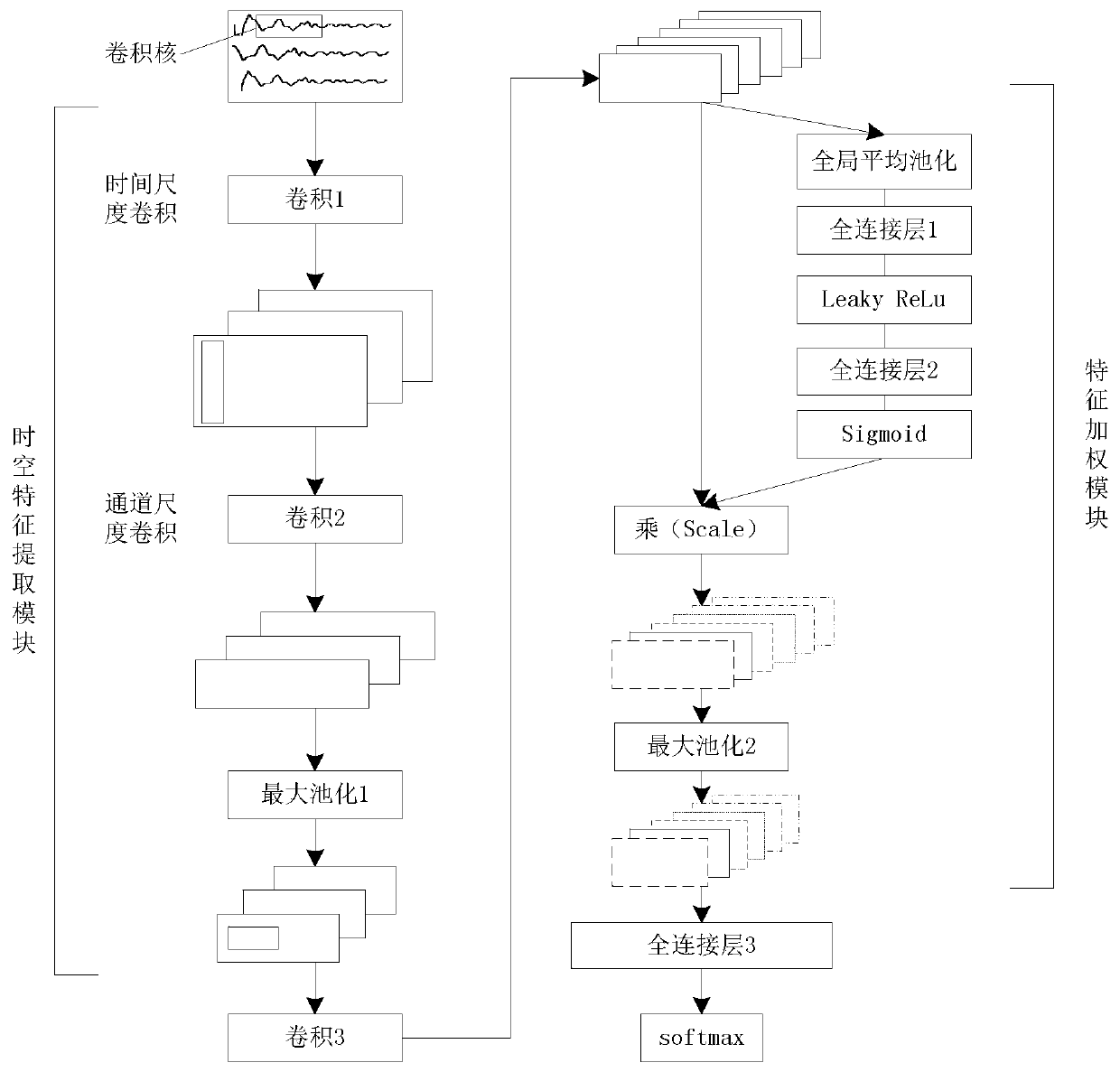Electroencephalogram signal recognition method based on spatiotemporal feature weighted convolutional neural network
A convolutional neural network and electroencephalographic signal technology, applied in the field of electroencephalographic signal recognition based on the weighted convolutional neural network of spatiotemporal features, can solve problems such as the inability to fully and effectively utilize the effective information of electroencephalographic signals.
- Summary
- Abstract
- Description
- Claims
- Application Information
AI Technical Summary
Problems solved by technology
Method used
Image
Examples
Embodiment Construction
[0034] The technical solutions in the embodiments of the present invention will be described clearly and in detail below with reference to the drawings in the embodiments of the present invention. The described embodiments are only some of the embodiments of the invention.
[0035] The technical scheme that the present invention solves the problems of the technologies described above is:
[0036] A method for recognizing an EEG signal based on a spatiotemporal feature weighted convolutional neural network provided in this embodiment includes the following steps:
[0037]Step 1: Use the Emotiv EEG acquisition instrument to collect left-hand motor imagery EEG signals and right-hand motor imagery EEG signals, and the sampling frequency is 128Hz. Then, the data set is divided into a training set and a test set according to a ratio of 4:1, wherein the training set is used to train the model for motor imagery EEG signal classification, and the test set is used to test the classific...
PUM
 Login to View More
Login to View More Abstract
Description
Claims
Application Information
 Login to View More
Login to View More - R&D
- Intellectual Property
- Life Sciences
- Materials
- Tech Scout
- Unparalleled Data Quality
- Higher Quality Content
- 60% Fewer Hallucinations
Browse by: Latest US Patents, China's latest patents, Technical Efficacy Thesaurus, Application Domain, Technology Topic, Popular Technical Reports.
© 2025 PatSnap. All rights reserved.Legal|Privacy policy|Modern Slavery Act Transparency Statement|Sitemap|About US| Contact US: help@patsnap.com



